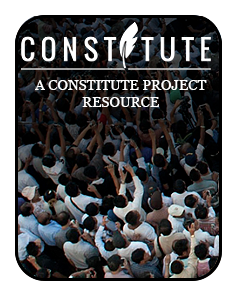In 1783, the Sunni Al-Khalifa family took power in Bahrain. In order to secure these holdings, it entered into a series of treaties with the UK during the 19th century that made Bahrain a British protectorate. The archipelago attained its independence in 1971. A steady decline in oil production and reserves since 1970 prompted Bahrain to take steps to diversify its economy, in the process developing successful petroleum processing and refining, aluminum production, and hospitality and retail sectors, and also to become a leading regional banking center, especially with respect to Islamic finance. Bahrain's small size and central location among Gulf countries require it to play a delicate balancing act in foreign affairs among its larger neighbors.
The Sunni-led government has long struggled to manage relations with its large Shia-majority population. In early 2011, amid Arab uprisings elsewhere in the region, the Bahraini Government confronted similar pro-democracy and reform protests at home with police and military action, including deploying Gulf Cooperation Council security forces to Bahrain. Political talks throughout 2014 between the government and opposition and loyalist political groups failed to reach an agreement, prompting opposition political societies to boycott parliamentary and municipal council elections in late 2014. Ongoing dissatisfaction with the political status quo continues to factor into sporadic clashes between demonstrators and security forces.
Bahrain is a constitutional monarchy.
Source: CIA World Factbook
Members:
Resources
Displaying 1 - 5 of 37Constitution of Bahrain 2002 (rev. 2012)
The constitution was promulgated by Emir Hamad bin Isa Al Khalifa.
Resolution No. 48 of 1980 defining the requirements and conditions for obtaining land-division’s licences.
The purpose of this Resolution is to define the requirements and conditions for obtaining a licence for the division and partition of lands. This Resolution is composed of 2 Chapters divided into 7 articles. Chapter I deals with matters related to licences and in particular with: (a) licences which shall be issued by the Ministry of Housing; (b) applications for licences shall be submitted to the Survey Department accompanied by the necessary documents and certificates; and (c) the Natural Planning Department shall prepare the land division. Chapter II contains general provisions.
Legislative Decree No. 6 of 1985 regulating the appropriation of lands and buildings by citizens of the Cooperation Council of Arab Gulf Countries
The aim of this Legislative Decree is to regulate the appropriation of lands and buildings by citizens of the Cooperation Council of Arab Gulf Countries. This Legislative Decree is composed of 8 articles. Article 1 lays down requirements and conditions for appropriation of lands and buildings by citizens of the Cooperation Council of Arab Gulf Countries. Articles 2-6 deal with the following matters: (a) time limit for the registration of lands; (b) transfer of ownership; and, (c) requirements and conditions for economic activities.
Resolution No. 9 of 1979 amending Resolution No. 2 of 1979 concerning the transportation and taking away of sand, pebbles and stones necessary for the filling up operations of wetlands and lands covered with marine water as well as for the construction...
This Resolution amends Resolution No. 2 of 1979 concerning the transportation and taking away of sand, pebbles and stones necessary for the filling up of wetlands and lands covered with marine water as well as for for construction operations as follows: (a) by adding the zone of Allouzi in the areas where it is allowed to take away and transport sand, pebbles and stones; and (b) by establishing a register for fees.
Resolution No. 1 of 1971 concerning taking away and removal of sand, pebbles and stones necessary for filling up and construction operations.
This Resolution aims at soil and environment protection. This Resolution is composed of 14 articles. Article 1 defines the zones from which it may be allowed to take away or transport sand, pebbles and stones. Articles 2-8 define the requirements and conditions for taking away sand, pebbles and stones necessary for filling up and construction operations. Articles 9 and 10 define the zones for taking away the following materials: (a) pebbles and stones; (b) soil for agricultural purposes and poultry breeding; and (c) land and marine sand.



